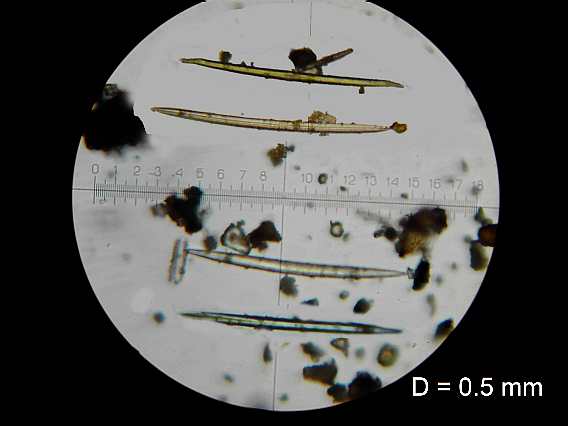
V.A. Tselmovich1, A.F. Grachev 2, O.A. Korchagin3
Geophysical Observatory, Schmidt Institute of Physics of the Earth, Russian Academy of Sciences, Borok, Yaroslavl oblast, Russia. E-mail: borok1@mail.ru
2
Schmidt Institute of Physics of the Earth, Russian Academy of Sciences, Moscow, Russia. E-mail: afg rachev@ gmail. comGeological Institute, Russian Academy of Sciences, Moscow, Russia. E-mail: okorchagin@rambler.ru
In the given work we bring the first finds of quartz sticks from the Cretaceous-Paleogene (K/T) boundary clay layer in the Gams stratigraphic sequence, Eastern Alps, consisting on 99% from SiO2 (fig.1, fig.2), which we identified as silica glass [http://bourabai.narod.ru/dmitriev/dragon.htm]. Silica glass were allocated from a transitive layer by means of a heavy liquid. They were investigated by means of optical microscopy (microscope “ Olympus BX51”) and the microanalysis (microprobe "Camebax"). Except for silica glass, in this layer a plenty of minerals which can have a space origin was revealed: diamond, moissanite, corundum, awaruite, nickel phosphide, pure nickel. We believe, that the joint presence of minerals of a space origin and silica glass can testify for the benefit of comets hypotheses of impact which took place on border K/T.

Ðèñ. 1. Silica glass 1 Ðèñ.2. Silica glass2
Remark: Given discovery is acknowledgement of cometary-disastrous nature of Cenozoic origin, see "THE BIRTH OF CENOZOIC ERA" "THE BIRTH OF CENOZOIC ERA-2".
